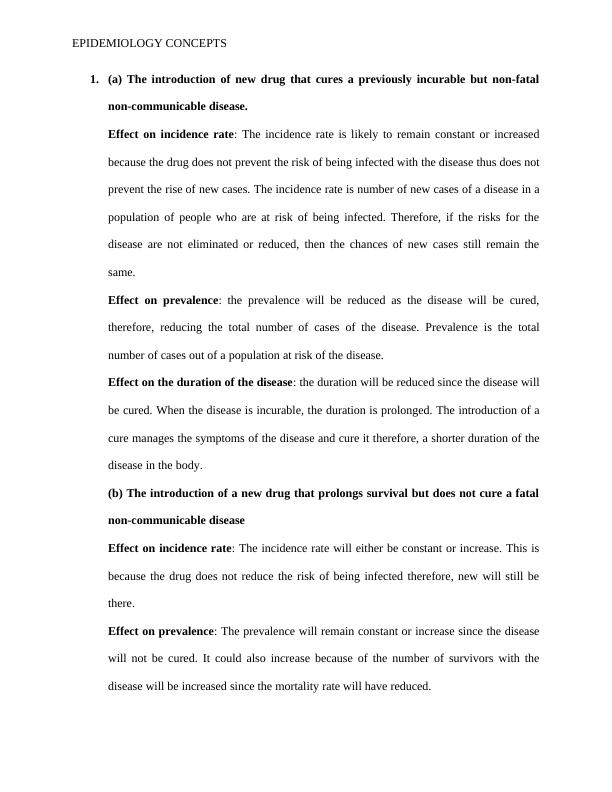Epidemiology Concepts
Answering questions related to the effect of new drugs and vaccines on disease incidence, prevalence, and duration, as well as calculating the prevalence of overweight and obesity in a group of men over a ten-year period.
10 Pages2133 Words203 Views
Added on 2022-11-10
About This Document
This document discusses the effects of new drugs and vaccines on incidence rate, prevalence, and duration of diseases. It also explains different study designs and their applications in epidemiology. The document includes examples and calculations to help understand the concepts better.
Epidemiology Concepts
Answering questions related to the effect of new drugs and vaccines on disease incidence, prevalence, and duration, as well as calculating the prevalence of overweight and obesity in a group of men over a ten-year period.
Added on 2022-11-10
ShareRelated Documents
End of preview
Want to access all the pages? Upload your documents or become a member.
Public Health Law and Policy
|9
|1782
|391
Epidemiology of Communicable Disease | Study
|11
|3193
|74
Epidemiology - Tuberculosis | Australia and Peru
|7
|1564
|10
Analyzing Infectious Diseases: Epidemiology, Outbreak, Incidence, and Prevalence
|6
|880
|49
Reflection on Infectious Diseases
|7
|1473
|107
Measles: Etiology, Epidemiology, and Nursing Roles
|9
|2551
|449



